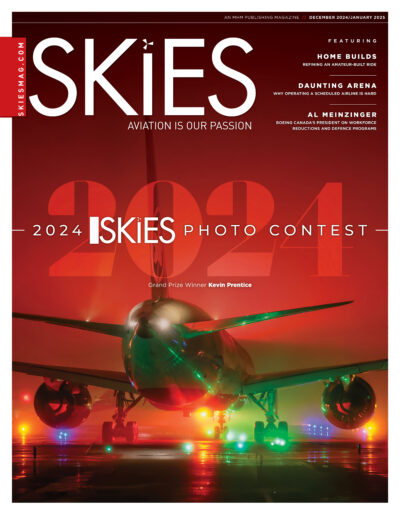For over 30 years, Honeywell Aerospace has hosted the unofficial kickoff event for the National Business Aviation Association’s Business Aviation Convention and Exhibition (NBAA-BACE) with its annual Global Business Aviation Outlook. This year was no exception as members of the media were invited to hear the projections for the next decade of business aviation purchase and usage trends.
Strategic Planning Manager Kevin Schwab presented this year’s findings while also diving deeper into the statistics. Based on extensive surveys of worldwide business aviation operators, Honeywell is expecting up to 8,500 new business jets to be delivered in the next 10 years for a total of US$280 billion in sales. This figure is up from last year’s projection, with much of the growth being seen in the large cabin segment, accounting for one-third of total sales. These numbers are expected to be 18 percent for new acquisitions with 15 percent for fleet replacement, indicating a three percent overall growth. While the 10-year projection is up, the five-year plans have held steady with the 2023 predictions. In addition, deliveries in 2025 are expected to increase 12 percent over 2024 numbers with a subsequent 11 percent increase in expenditures.
Of note were some of the factors driving these purchases. Survey respondents indicated that their top priorities are performance and cost. Of approximately 40 categories, leading the pack — by a significant margin — was aircraft range. Rounding out the top four were low operating cost, max payload/number of passengers, and field performance.
“So, again, range and direct operating costs, those bubbled to the top as the two most important things that people consider when purchasing an aircraft,” Schwab pointed out.
“The business aviation industry is in a prolonged period of healthy growth, and we don’t see that positive trend changing any time soon,” said Heath Patrick, president, Americas Aftermarket, Honeywell Aerospace Technologies. “Business aviation continues to see more users and, as a result, manufacturers are ramping up production to keep pace with growing demand, a trend we expect to continue for the foreseeable future. Despite a mixed macroeconomic environment and challenging geopolitical circumstances, operators are optimistic about their flight activity increasing in 2025 and beyond.”
In addition to sales, the Honeywell outlook examined flight activity. Coinciding with expected increases in sales, 93 percent of operators plan to fly as many or more hours in 2025 as they did in 2024.
“The way I frame this up is that the high-flyers are going to fly even higher numbers,” Schwab remarked.
The study also once again delved into SAF (Sustainable Aviation Fuel) usage. When asked what operators are doing to reduce their carbon footprints, 60 percent said they are acquiring newer, more fuel-efficient aircraft while 55 percent replied that they are using SAF.
When pushed further on obstacles preventing SAF use, 75 percent indicated cost was the number one deterrent followed by availability and infrastructure limitations. However, also on the list were “risk to aircraft reliability” and “lack of awareness.”
“We suspect that there is an opportunity for us as an industry to produce educational materials and reach out to operators to maybe assuage some of these concerns which could be leading to lower SAF adoption than otherwise there would be,” Schwab surmised.
Another key area examined in the outlook was the breakdown in regional demand for the five-year trend. While North America continues to command the largest share of expected deliveries, at 66 percent, most other regions held close to previous projections with one notable exception: Latin America. Operators there showed a doubling of 2023 numbers, increasing from five to 10 percent.
“This year, many more operators are telling us they’re going to buy more planes, and there’s been really strong flight activity in Brazil, specifically. So, what we think is happening here is operators in that particular country have seen this uptick in flight activity and are experiencing demand for more aircraft. This is a really exciting part of the survey,” Schwab explained.
Following the outlook, Honeywell’s Chief Technology Officer Todd Giles hosted a discussion panel on the future of AI in aviation. Joining him were Dr. Trung Pham, chief scientist and technical advisor for AI & Machine Learning with the FAA; Pervinder Johar, CEO of Avathon; and Matt George, CEO and co-founder of Merlin Labs. These three experts provided insight into various applications of AI technology and how it is being developed for use in numerous areas of aviation, including military, cargo, and passenger transport.
There was agreement that while full integration of AI into aircraft operation will take quite some time, there are steps that can be utilized to accelerate the progress such as new regulatory and certification processes along with unique data gathering and analysis.
Additional information on the outlook can be found on Honeywell’s website or, if you’re attending NBAA-BACE 2024 in Las Vegas this week, representatives will be happy to discuss the details in person at booth #3601.


